What is a sustainable business?
by Emma Croft

Harness the Power of Technology
to Live More Sustainably: 9 Tangible Tips
by Emma Croft
Image via Unsplash
Sustainability has become mainstream in the world of business, as HBR can confirm. Stakeholders – whether that’s investors, employees, customers, or others – increasingly expect eco-friendliness from businesses and will, often, go out of their way to support it. Moreover, due to climate change, business leaders themselves are becoming conscious of the need for sustainable operations.
As a new or soon-to-be business owner, it would be in your best interest to start a sustainable business. With the way the wind is blowing, it would help you gain traction, attract positive attention, and become more successful. Also, you’d be doing your bit for the planet.
Below, Garden-Planting-Tips.Com offers this mini-guide on building a sustainable business:
What is a sustainable business?
Before you can build a sustainable business, it may help to learn more about the concept. According to Network for Business Sustainability, sustainable businesses develop in a non-harmful way. They create wealth without hurting the ecosystem or taking away resources belonging to future generations. They’re a part of an eco-friendly chain of interdependent businesses that operate sustainably.
What does it take to make a business sustainable?
Typically, to make a business sustainable, it would have to operate with sustainable green processes. This would mean every process, from product development and operations to shipping and customer care, would operate with net-neutral or positive eco-impact. There would be a minimum of waste and increased use of sustainable products, services, and methods. Practically, this isn’t always possible – but every business can still have an eco-friendly strategy to maximize sustainability.
Creating a “greenprint” will give you clarity
Writing a business plan with an emphasis on sustainability will help you create a concrete roadmap on how to make your new business “green.” This would include critical details like funding, product or services, marketing, and business structure. The “green” angle could include strategies for making your processes more sustainable – such as how to create a product from eco-friendly sources with as little waste as possible.
What challenges can you expect?
Needless to say, it’s hard to make a business sustainable. You could face a number of challenges depending on your industry. Some examples are a lack of funding, a lack of eco-friendly partners (like suppliers), and a failure to find enough demand in the market. This would be on top of your usual business challenges. Sustainability is still new, meaning you may have to research sustainable processes yourself and pay extra for any you implement.
Take inspiration – and pointers – from successful green businesses
Fortunately, many businesses, big and small, are successfully going green – if not all the way, then at least partially. You could draw inspiration from their successes and, if possible, use some of their processes. The UN environment program offers several wonderful examples. For instance, Gjenge Makers uses discarded plastic to make building material that is lighter and more durable than cement.
Simple steps to going green
Being green doesn’t have to be about big, sweeping changes. Small steps also count and matter:
- Culture: Having sustainability as a part of your business culture would help you train employees to be sustainable, not to mention attract stakeholders who care about the concept.
- Office or worksite: You can make your office or workplace more sustainable in various ways, such as preferring natural light, using recyclable cutlery, using clean energy, and using energy-efficient equipment.
- Technology: You can move to technological processes, which are inherently more sustainable. For instance, business software can help you automate some tasks, and digital print is a worthy replacement for paper.
- Garden: You could even have an office garden– or indoor plants if that’s not an option – as a part of your sustainability drive. Needless to say, having plants around also offers health benefits and improves your “green” look.
Choose an appropriate business structure
Your business structure may influence your sustainability. For instance, some business structures like LLCs are more attractive to investors. LLCs offer advantages like limited liability, easier tax, less paperwork, and more flexibility. If you’re choosing to form an LLC, you can hire a lawyer or use a formation service – the latter being considerably less expensive. If you’re choosing a formation service, you can read reviews to find the best services.
Market your green business
Marketing is critical to your success – it’s how you can emphasize your eco-friendliness, raise your profile in the market, and attract stakeholders that care about all things green. You can create engaging and informative content about your sustainability drives, which would help your brand to build trust and credibility with your audience. This would, ultimately, lead to increased sales. To learn more about content marketing, consult online sources like Cornerstone Content.com.
You can market your business through offline and online channels. For instance, a simple but effective way to market is to create an eye-catching infographic on your website with information on what makes you sustainable. You could hire a graphic designer to create it or try an infographic maker to speed up the process (and save you money). The latter option involves you choosing a template; personalizing it by adding text, colors, background, and design elements; and then publishing it.
Conclusion
Building a sustainable business is a long journey. It may involve a lot of research, time, and experimentation. You could face failures along the way, and you will have to market hard to gain traction in the market. The rewards would be worth it, though – you’d have a sustainable business that would stand the test of time.
Sustainability technology can be a fantastic ally
by Emma Croft

Image via Pexels
When it comes to sustainability, technology can be a fantastic ally. By making a few small changes to the way we use everyday technologies, we can help contribute to leading a greener and more sustainable life. Here, Garden Planting Tips presents 9 ideas on using technology for environmental causes.
- Use Sustainable Energy
One of the best ways to use technology to lead a more sustainable life is to switch to sustainable energy sources. This could mean using solar panels to generate your electricity or investing in a wind turbine. Alternatively, you could switch to a green energy tariff with your current energy supplier. Energy Star also suggests making the switch to LED lights at home, as this can significantly drive down your energy consumption.
2. Use Energy-Efficient Appliances
When it comes to the appliances in your home, make sure to choose energy-efficient models. Look for devices with an Energy Star rating, as these are the most efficient ones available on the market. Regarding big-ticket items like fridges and washing machines, energy efficiency can make a big difference to your energy bill and the environment - so it’s a win-win!
3. Drive an Electric Car
Consider going electric if you’re in the market for a new car. Electric cars are much more efficient than petrol or diesel cars and produce zero emissions. With a growing network of charging points, it’s now easier to own and operate an electric vehicle than ever before.
4. Use Public Transport
Try to use public transport instead of driving your own car whenever possible. Not only is this better for the environment, but it can also save you money on fuel costs. If you live in a big city, consider investing in a travel card that gives you unlimited travel on public transport. Walking or biking are also great sustainable alternatives.
5. Business Sustainability
If you’re an entrepreneur, you may wonder how to implement sustainability into your business. One way you could do this is to use an online invoice generator to mail invoices to customers instead of sending paper copies. Choose from pre-made templates to create customized invoices that include text, photos, logos, and more. When looking for the correct invoice generator, also make sure you can download your invoices in your preferred format.
6. Recycle
One of the simplest ways to lead a more sustainable life is to recycle as much as possible. Whenever you can, recycle paper, plastic, glass, and metal. Many local authorities now offer recycling services, so it’s easy to do your bit for the environment.
7. Buy Second-Hand
Before buying anything new, see if you can find it second-hand. There are many ways to buy second-hand goods, whether through charity shops, online marketplaces, or car boot sales. Check out this guide by Our Slow Home on buying second-hand if you’re confused about where to start. Not only is buying second-hand better for the nvironment, but it’s also usually much cheaper!
8. Use Reusable Products
Where possible, try to use reusable products instead of disposable ones. This could mean investing in a reusable water bottle or coffee cup or using reusable nappies instead of disposable ones. There are many reusable products available now, so there’s no excuse not to make the switch.
9. Reduce Food Waste
One of the biggest problems facing the environment is food waste. It’s estimated that around a third of all food is wasted annually. To help reduce food waste, only buy what you need and use up all your leftovers. You can also compost your food waste, a great way to reduce your carbon footprint.
By making a few small changes to how we use technology, we can help to lead a more sustainable life. These are just a few ideas - there are many more ways you can use technology to live a more sustainable life. So, what are you waiting for? Start making a difference today!
Care for Your Mind and the Planet
With an Anti-Climate Change Plan
by Emma Croft
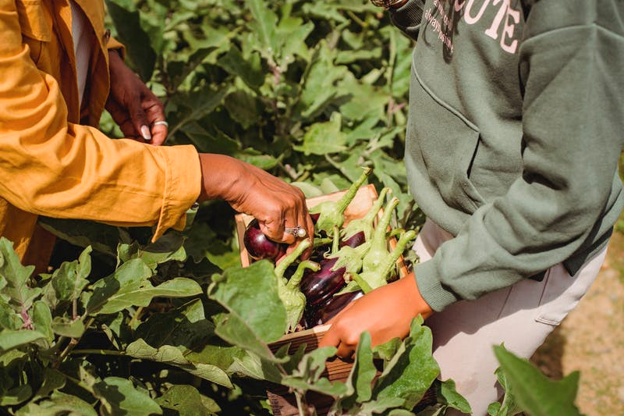
Image via Pexels
According to studies, human beings only have until 2030 to reverse course on climate change. That looming number understandably causes a lot of anxiety. However, you can care for yourself and the planet with these steps.
Change Your Diet
Methane is even more damaging to the ozone than carbon monoxide, and unfortunately, cows produce a lot of this gas. However, there is good news: You can reduce the demand for cattle ranching by cutting down on beef and dairy consumption. Adhering to a vegan diet is the best option, but not everyone can make such a drastic change. Alternatively, you can limit beef intake to special occasions, eat more fish or try a Mediterranean diet. You can even supplement your pantry by cultivating fresh vegetables and herbs in a kitchen garden.
Upgrade Your Appliances
Today's major appliances are even more energy-efficient than models from 10 years ago. If it's in your budget, upgrade the following to Energy Star-approved options:
• Water heater
• HVAC system
• Dryer
• Stove
Increase Your Home's Energy Efficiency
The less electricity you use, the smaller your carbon footprint is. There are tons of easy, affordable ways to maximize your home's efficiency to this end:
• Program your thermostat to go up when you leave for work
• Make sure your attic and walls are insulated
• Weatherize windows and doors to prevent drafts
Support Organizations Fighting Climate Change
Many organizations are fighting climate change, but the polluters have a lot of money invested in the status quo. Donating to well-respected green organizations gives them the resources to fight legal battles.
Buy Second-Hand Clothes
Fast fashion uses a lot of water and produces greenhouse gases. Many companies also have questionable labor practices. Changing how you supply your wardrobe can positively impact the environment:
• Shop yard sales, thrift stores, and second-hand retail outlets
• Upcycle old clothing
• Use thrifting and consignment apps
• Research brands to find those with sustainable practices
Contact the Government
While individual action is admirable, corporations are the biggest polluters by far. However, government regulations can reign in these destructive behaviors. You can instigate change by calling your representative, voting for candidates who support sustainability, and demanding green transportation options.
Share Your Knowledge
Talk to loved ones about climate change and why fighting it is important. You can amplify your voice by posting on social media. You can also share articles from experts and activists.
Start Your Own Eco-Friendly Business
If you don't see a sustainable retail option in your town, you can fill that gap by launching your own startup. Today's technology makes it easier than ever to manage operations. You can even customize pre-made invoice templates with the following features:
• Logos
• Photos
• Copy text
As a small business, you can decrease your carbon footprints with careful planning. You can find many green-certified carbon calculators to help you make sustainable decisions.
Take Care of Your Mental Health
Before tackling climate change, you need to take care of your mental health. If you struggle with anxiety, take time every day to quiet your mind and nourish your body. Just a few lifestyle changes can help you feel calmer and refreshed:
• Unplug from electric devices for an hour
• Practice mindfulness
• Try breathing exercises
• Write in a journal
• Walk through nature
• Practice self-touch
Climate change is a huge challenge, but it isn't insurmountable. Individuals can do their part by making modifications to their daily lives. Just remember that your mental health is also a priority, and you can contribute the most when you feel your best.
Realistic Ideas
for Spring Home Improvements
by Emma Croft
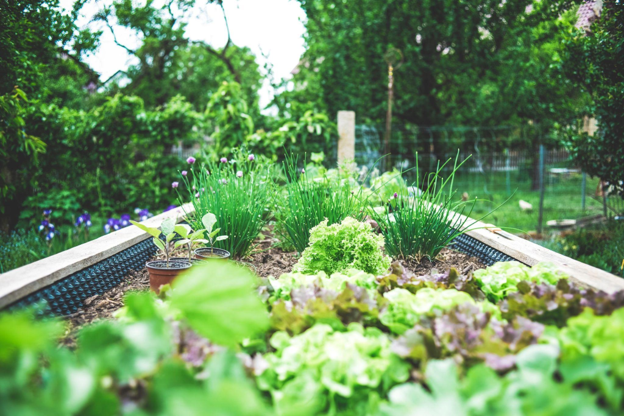
image via Unsplash
As the warm weather of spring rolls in, you might be eager to use it to your advantage and make some much-needed upgrades to your home. The good news is that there are countless ways that you can improve the look and function of your garden, landscape, and house.
We all know how beneficial fresh air and sunshine can be for the body and mind. So, why not spend as much time outdoors as possible in the coming months? You can get started with these home and garden refresh ideas from Garden-Planting-Tips.com!
Upgrade the Walls
One of the cheapest ways to transform a room or space is to paint the walls. Consider throwing a fresh coat of paint on your living room, kitchen, or bathroom walls. You could either stick with the same color or opt for a new shade that evokes more energy, relaxation, or any other quality you desire.
Another option is to put up wallpaper. These days, there are many elegant and attractive designs, and some brands allow you to customize your wallpaper. Consider going with peel-and-stick wallpaper, which is quick to apply and can be removed or repositioned without harming your walls. This peel and stick wallpaper is easy to use and will hold up for many years.
Deep Clean Your Garden and Surrounding Areas
Cleaning up your garden is a great place to start when improving your property’s exterior. It may sound like a lot of work, but weeding your plant beds, removing sticks and leaves from your lawn, and ripping out dead flowers and plants can prove to be quite cathartic. Plus, it will bring order and boost curb appeal!
While you're at it, take the time to scrub down your deck and outdoor furniture. If you have a power washer, that's even better!
Mow the Lawn Regularly
Warm weather means it's time to start mowing again. Get a strong start this spring, and create a weekly routine that helps you keep your grass trimmed and beautiful.
Trim the Shrubs
Pruning shrubs is critical for keeping them healthy and vibrant. Get rid of any broken branches on your shrubs, but be careful with spring-flowering shrubs like hydrangea and forsythia; you don't want to cut off any soon-to-be blooms. With that said, now is the perfect time to shape your shrubs that will flower in the summer.
Plant a Salad Garden
If you want to grow more crops but don't want to dig up any more of your yard, consider planting leafy greens. All you need is a window box or a small plant pot to grow arugula, spinach, and other greens.
Grow Veggies Indoors
You can also grow crops inside your house. Warm-whether vegetables like peppers, eggplants, and tomatoes grow well indoors provided you use the appropriate soil and lighting techniques. Depending on the climate, you may even be able to grow these veggies in a window.
Build a Rain Barrel
Harvesting rainwater is an excellent way to save on your water bill and minimize your property's runoff to the sewer system. While you can purchase rain barrel kits from a local or online store, you can save money by creating your own.
Simply place a large barrel or storage tub under a downspout, leaving the container covered when it’s not raining. You can make a more advanced rain barrel by adding a spigot or hose to the barrel lid.
Take advantage of the warm weather by tackling some home improvement projects. The ideas above are a great place to start for making your home more appealing and functional. But keep researching to find other projects that can bring your house, garden, and landscaping to the next level. And remember to check out Garden-Planting-Tips.com for a wealth of resources!
How to Build a Successful and
Sustainable Hobby Farm Business
by Emma Croft
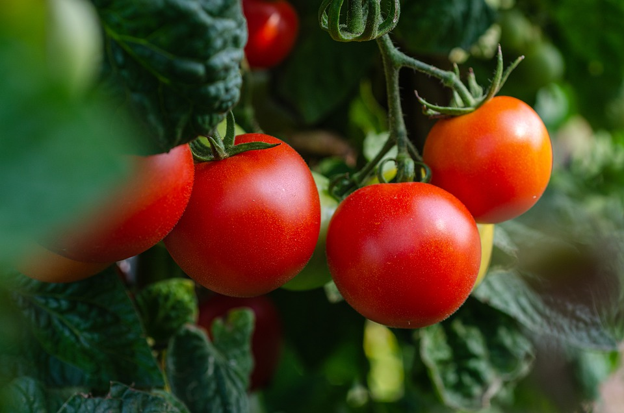
Photo by Kathas_Fotos via Pixabay
A successful business offers a unique way of solving a problem for its target market. It's able to attract and retain customers because it solves the problem with the right price point, quality level, and core messaging. These are the kinds of considerations you will face when starting up a homestead business.
Homestead businesses are exploding in popularity due to the growing urgency to help slow climate change and promote sustainable living. With these tips, you can make money while contributing to a greener, less polluted planet by turning your hobby farm into a business. Garden-Planting-Tips.com shares how.
Target Market
While numerous elements contribute to a small business making it in a competitive market, knowing yourtarget audience and positioning your price point perfectly is essential.
For example, if you're selling artisan honey from farm-raised rare bees, your target market is likely people willing to pay extra for quality and the assurance of sustainability. Your first job is to create a brand identity that lets consumers know how your product adds value to their lives.
Pricing Strategy
Once your brand is defined, money should be your next consideration. Let's look at the most important elements of a homestead business's financial strategy:
• Data is everything. Use time-tracking software or a spreadsheet to monitor your overall investments of money and time. Use this information to refine your processes and work out where to spend your time, and where you can eliminate tasks.
• Understand overheads. You should know your baseline costs, profit margins, gross profit, spend on consumables, and every single overhead. Every detail you spend time and money on should be accounted for.
• Factor in the whole process. As a homestead business, there's significant expertise that goes into crafting your product. Consider all the reasons why your artisan product is worth more than something from Walmart, and use these defining points in your marketing campaign.
• Use online tools. Depending on your products, there may be several factors to consider in their production and sale. Using a go to market strategy planner can help you ensure that you’re on the right track.
Should Your Homestead Business Become An LLC?
If you decide to expand your business, setting up an LLC can offer substantial benefits, including:
- Total control
- Limited personal liability
- Avoiding pass-through deductions and double taxation
- Less administration and paperwork
- Flexibility with sharing profits
You can set up an LLC yourself or use a formation service to avoid paying lawyer fees.
Small Business Grants
There are a host of different grants available in the US. These are sources of “free” money. The cost of these grants are paid in time, however. Because there are so many grants available, it takes a lot of time to search out grants for which you qualify, then there is typically a lengthy application process. Should you be awarded a grant, there may also be exacting restrictions about what the grant’s fund may be used for. Keep these things in mind before choosing to go through the grant-financing process.
Take the Plunge and Monetize Your Homesteading Passion
Marketing your business is fundamental to success. However, there are elements that are worth outsourcing, such as design. This lets you bank on the services of a professional without the cost of hiring someone in-house.
Homestead businesses can be a great way to supplement your primary income or begin the transition into a new full-time vocation. Use these tips as you go through the planning stages of developing your own homestead business.
This article is brought to you by Garden-Planting-Tips.com, where it is my mission to help all of you grow a successful crop of healthy vegetables that you will enjoy come harvest time.
Top Gardening Tips for Beginners
by Emma Croft
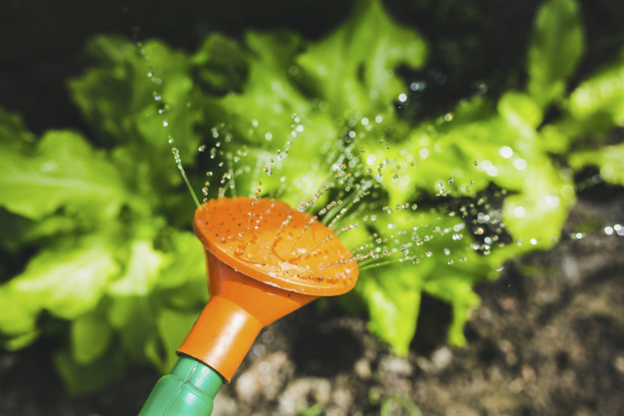
Image via Pexels
Growing a garden is incredibly rewarding. Gardening is a great way to save money on produce, enjoy freshly picked vegetables throughout the summer, and enliven your yard with beautiful blooms. The act of gardening is also a good form of exercise and can benefit your physical and mental health! However, if you’re completely new to growing plants, starting your very first garden can feel a little intimidating. Here are several steps you can take to ensure your first garden is an abundant success!
Learn from the Pros
Growing a prolific garden requires a lot of know-how. If you have the budget to hire a gardener, planning your first garden will be a lot easier. Experienced gardeners will help you choose the right site in your yard, pick out plants that will grow best in your region, and create a maintenance plan that will suit your lifestyle. You could even hire a landscaping service for regular weeding and watering if you don’t have the time to tackle these tasks yourself.
Start Small
Tending to a garden is a lot more work than it might appear. Choose a sunny spot in your yard and start with just a couple of raised beds so you can give them your full attention. You can always work on expanding your garden year by year. Raised beds, as opposed to planting directly in the ground, can help keep hungry critters away, improve soil drainage, reduce weeds, and extend your growing season. Plus, working over raised beds is much easier on your back!
Test Your Soil
Testing your soil is one of the most important things to do before starting a garden in your yard. Good soil will contain essential nutrients and drain well to prevent root suffocation and rot. A soil test will let you know what you need to add to your soil to make it hospitable for plants. Amending your soil without first doing a soil test might result in too much or too little fertilizer on your garden beds, both of which could hurt your plants. You can take a soil sample from your garden and bring it into a state-certified soil-testing facility to have it analyzed.
Choose the Right Plants
Put careful thought into the plants you choose for your garden. First, consider your ultimate goal. If you’re growing a garden to reduce your grocery bill, plant crops that are typically more expensive to buy from the store, like mixed salad greens and herbs. It’s also important to consider your region when selecting plants. For example, peppers can be challenging to grow in the Pacific Northwest, while cool-weather crops like broccoli can suffer in hot climates.
Harden Off Your Seedlings
Whether you start plants in your home or purchase seedlings from the nursery, it’s important to harden off your plants before sticking them in the ground. According to Grow a Good Life, hardening-off seedlings helps them adjust to the extremes of the outdoors, such as direct sunlight, wind, rain, and cool night temperatures. The hardening off process involves placing plants in a sheltered location outside for a few hours and increasing their outdoor exposure day by day before leaving them out overnight and eventually transplanting them into the garden.
Water and Weed Regularly
The work isn’t done after you get those plants into the ground. Growing a great garden requires regular attention to weeding and watering. Try to get in the habit of plucking weeds out of your garden as they pop up, so you can prevent them from taking over. You can also use mulch to control weeds and help your soil retain moisture during the hot summer months. When it comes to watering, the Old Farmer’s Almanac recommends drip or trickle systems to deliver water directly to the roots of your plants.
Protect Your Garden from Pests and Pets
If animals are eating from or rummaging through your garden, you can install a fence around its perimeter. Chicken wire fences are typically more affordable and easier to install. When deciding on your fence’s height, you’ll need to determine which type of animals may visit your garden (e.g., rabbits, deer). A fence will also protect your garden from an overly playful pup. If your pup enjoys spending time in the yard with you, pick up a few toys to keep him entertained while you work in the garden. If you’re working in hot weather or your dog is prone to overheating, a cooling pad can help him Starting a garden will definitely require some work on your part, but you won’t regret it! Digging around in the dirt, planting seedlings, watering, and pulling weeds can be surprisingly meditative. To ensure your first garden is a success, keep these tips in mind. Starting with the right information will help you find your green thumb and nurture your plants to produce fresh veggies and beautiful flowers for your whole family to enjoy.
If you’re starting a new garden, visit Garden-Planting-Tips.com, your go-to for gardening advice and resources!
Gardening 101: Get Your Garden Started
by Emma Croft
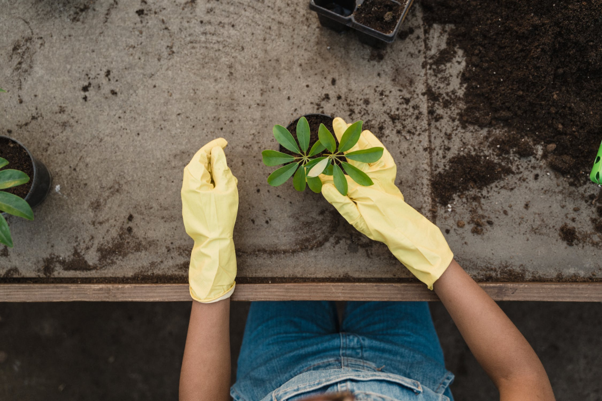
Image via Pexels
A garden can be the perfect retreat for anyone who is stressed out during their day. The act of gardening, in its simplest form, is a release from stress and frustration. It’s also an opportunity to get outside and enjoy nature. Finally, it can provide you with fresh fruits and vegetables that are better than what you buy at the store because they were grown with your own care and dedication!
As a gardener, there are many decisions that need to be made before you start planting your first seed: What kind of garden will you have? How much time do you want to spend tending plants each week? What type of irrigation system should I use? And much more!
Gardening-Planting-Tips.com can help you navigate the entire process, and offer suggestions along the way. In the meantime, we offer this helpful guide as a way to kickstart your planning!
How to Grow Your Garden Successfully
Create the ideal space for your plants
You will need to consider the shape, size, and soil conditions of your future garden space. The ideal size for a garden depends on how much time you have to spend working in it. Do you want a small, simple container garden that requires minimal effort, or will you want to invest lots of time and labor into a large veggie patch? The layout of your space can vary greatly as well. There is no right or wrong answer here. Just be realistic with the amount of effort you'll be able to put forth.
What about the soil?
Think about what kind of soil is best for the plants you want to grow. If you are planting vegetables, will they require specific nutrients? Are the nutrients already in the soil, or do you need to add special additives? How healthy will your plants be with traditional garden soil, or would a more fertile variety work better? These questions don't have any hard answers either. You will just have to experiment and find the ideal mix for your needs.
If you're growing plants in pots, containers, or hanging baskets, then soil is not as important. These planting options provide a great alternative because they don't require the same amount of space and effort that a traditional garden does.
How much do I need to water the garden?
Watering is an important part of gardening. Not only does it provide the water that plants need to grow, but it also helps to aerate the soil and remove any excess debris. However, watering your garden can be a time-consuming job if you do not have a proper irrigation system in place. So before you start planting, take some time to think about the amount of water you will need.
Using a hose with an automatic watering system is one option, but these can be expensive. Caring for gardens that are watered this way requires that you set up timers and adjust them regularly to compensate for changes in weather conditions. Another option would be to use a drip or soaker hose. These are easier to use because the water slowly drips from your hose at a consistent rate.
If you don't have one of these systems set up, then it's just as easy to forget and overwater your garden! Alternatively, you could install a watering timer on your home’s main supply line for convenient watering throughout the day. Again, it's up to you to decide how much time, effort, and money you ultimately want to spend.
Enjoying your yield
The ultimate reward for all the love and care you put into your garden are the beautiful herbs, veggies and fruits that you’re able to harvest. Not only does this save you money at the grocery store, but it also makes it easier to eat healthy. Having healthy portions of tomatoes, cucumbers, squash, beans and eggplant close at hand ensures you’ve got optimal nutrition throughout the day, whether it’s while you’re working from home or preparing weeknight meals.
All in all, getting started is the hardest part!
Gardening is a great way to spend time outdoors and take care of something beautiful. Remember, each decision you make will impact how much money, effort, and space it takes to maintain your garden in the future. The most important thing is to know what kind of gardener you want to be, so take action and get started today!
Looking to learn all there is to gardening? Then be sure to check out and subscribe to Gardening-Planting-Tips.com.
Set Up an Indoor Garden
for Continuous Cultivation
by Emma Croft

Image viaUnsplash
Indoor gardening is a movement that’s grown over the past decade and will likely continue, as more than half the world’s population lives in urban areas. People have realized that growing your own food can be done with or without significant land to grow on, making indoor gardening a viable practice for anyone with a bit of extra space to spare.
Do your part to help the planet, as well as yourself, and create a garden that won’t be stopped by seasonal shifts. Whether you’re new to gardening or experienced, here’s how you can turn your garage into a garden for year-round growth.
Dig Out Dedicated Space
Leave windowsill gardening to your fresh herbs and clear a part of the garage to use for a complete indoor garden. The plants need plenty of room to grow, but you’ll also need some room to work. Giving yourself enough space in the beginning by getting rid of clutter can decrease your overall stress and avoid future cramping.
If your garage doesn’t have adequate room for your garden, consider building an outdoor structure for your project. Building your own shed means you can build it to meet your specific needs with whatever material you decide to use. Wooden structures and steel structures both come with their own set of pros and cons. For example, economical steel structures tend to last longer than wood, but they can quickly rust if left untreated. Wooden structures might be easier to work with during its construction, but wood can rot and warp over time.
No matter what you decide to go with, make sure you keep some wall space free to build storage racks for your equipment. Whether you move the garden into the garage or into a new garden shed, you need your gardening tools nearby.
Build a Bed
Maximize the limited space of your indoor garden by building beds that bring the plants closer to natural and artificial light, as well as your hands. Aside from vertical options, you can always invest in wire rack shelving units. Stacking your plants helps save floor space and keeps everything contained in these areas for easy maintenance. Hanging a tarp around these side-by-side shelves will be easy, so you can transform the area into a greenhouse as needed to keep the temperatures up in the middle of winter.
This small greenhouse effect comes in handy in garages or sheds that are unfinished and uninsulated. In addition to the tarp for temperature control, be sure to pick some additional supplies that you usually don’t need when gardening outdoors.
Buy the Right Supplies
Ideally, the part of the garage you use will provide a source of natural light and be well-insulated; however, you can easily work around these two things by picking up a few other necessities. These go beyond your basic gardening tools, so don’t forget them.
1. Grow lights
2. Extension cord and surge protector
3. Thermometer
4. Fan
5. Space heater
6. Insulating foam sealant
The grow lights are necessary for indoor gardening since plants likely won’t receive the necessary 14 hours of light a day from within the walls of your garage, and the rest of the supplies are to monitor and maintain the indoor climate for your garden.
Use the foam sealant to fill in any holes or cracks in walls or around windows. Your garden could lose precious heat from small gaps in windows, so plug up anything you come across. For more complex jobs, you can find local window repair professionals by Googling “windows repair near me” and reviewing customer feedback and grades. Costs will depend on the type of window and repair required.
Once you have everything plugged into the surge protector for safety, start transferring or planting your favorite plants in containers on each shelf. Soon enough, you’ll have a healthy garden growing where nothing was before. Don’t let autumn leaves and fresh snow keep you from raising a garden. Use the space you have to grow something beautiful.

A Beginner's Guide to Creating a
Thriving Home Garden
by Emma Croft
Gardening can be an enjoyable hobby and even has health benefits, as it encourages you to get active and spend time outside in the sun. However, if you weren't born with a green thumb, you may feel uncertain about how to start a garden. This guide for newbie gardeners is a great starting point.
Identify Your Motivation for Starting a Garden
Figure out what benefits you want from a garden to guide your planning process.
- You may want to plant a garden for curb appeal—which, according to Redfin, can ramp up appraisal value. In this case, your garden is going to be all about aesthetics.
- Alternatively, you may want to plant a vegetable garden to grow your own food. Here's how to decide between a vegetable versus flower garden.
- Finally, consider how much care you want to give a garden. There are both high-maintenance and low-maintenance gardens.
Prepare the Soil to Lay the Groundwork for Strong Growth
A thriving garden starts with a properly prepared plot of land.
- Select a garden layout that fits your property's style and will accommodate the kind of growth you want (e.g., flowers, vegetables, shrubs, etc.)
- Fertilize the earth, infusing it with the nutrients your plants need to grow strong.
- Use a digging fork, trowel, spade, or roto-tiller to aerate your garden. This will make it easier for fertilizer nutrients to penetrate the earth below.
- Consider installing an irrigation system, allowing for easier watering.
Plant Your Garden According to a Big Picture Approach
Once you've planted the first seeds, there's still a lot of work to do.
- Select appropriate plants for your garden according to your geographic zone.
- Make sure to water your garden regularly, in line with seasonal needs.
- In fall and winter, apply mulch to protect plant roots against cold weather.
- Consider moving more sensitive plants indoors during the winter months to protect them against the cold.
Starting a garden requires getting your hands dirty—literally! However, it can be a fun process, especially as you start to see those first green shoots sprouting up. The above tips cover the basics you need to know to plant a thriving garden that will look great.
The Essential Spring
Gardening Checklist - Pro Tips For A Better Garden With Less Work
by Alex West
“In the spring, at the end of the day, you should smell like dirt.” - Margaret Atwood
Spring is almost upon us, and that means it's time to begin planning your garden. Science has known for many years that the very act of gardening benefits your physical and psychological health. Read more
Tips and Advice to Grow a Flourishing Garden
by Ella Andrews
Contributing Writer
If you are a first-time gardener, there is no end to the learning you can do in your first few times in the garden. Hopefully, our amazing list of gardening tips will help you make your next year's garden easier, and healthier, too. Continue
Growing Plants in a Hot Climate
by Ella Andrews
Contributing Writer
The climate can have a significant impact on how certain types of plants grow. Some plants grow better in warmer climates, but they still need appropriate care during warm weather. Read more.
Sustainable Gardening in 4 Simple Steps
by Ella Andrews
Contributing Writer
What is sustainable gardening and why is it important to you and the environment. Learn how to create a beautiful garden by using this method that will bring benefit to both you and the environment. Read more
Five Benefits of Organic Gardening
by Ella Andrews
Contributing Writer
In case you have been living in a cave for the last decade, you probably heard about organic gardening.
Wondering what the fuss is about? Read more.
Five Easy Garden Makeover Ideas
by Ella Andrews
Contributing Writer
Five easy garden makeover ideas anyone can make to their garden. Read more.
Copyright © 2008-2019 All rights reserved.